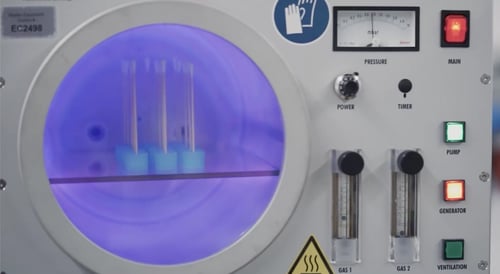
Some treatment goods are with fats, oils, waxes, silicones (not LABS-free) and other organic and inorganic contaminants (also oxide layers) covered.
Some treatment goods are with fats, oils, waxes, silicones (not LABS-free) and other organic and inorganic contaminants (also oxide layers) covered .
The impurities may only be a few micrometers thick, since the plasma is only able to remove a few nm/s.
Fats contain e.g. B. lithium compounds. Only the organic components can be removed from them. The same is true for fingerprints, so that is wearing of gloves is recommended.
With low-pressure plasma, it is also possible to run the processes in two stages. For example, the items to be treated are only oxidized with oxygen for 5 minutes; then they are reduced for 5 minutes with argon-hydrogen (e.g. mixture of 90% argon and 10% hydrogen) .
To learn more about the use of plasma in manufacturing, please read our eBook titled "Manufacturer’s Surface Activation Guide for Improved Adhesion."
Plasma: +1 (248) 761 9253
Distribution: +1 (248) 549 8600
Fax: +1 (248) 549 3533
info@thierry-corp.com